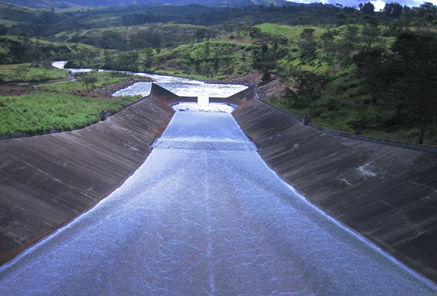Geography
Land Use
People
Economy
Water Statistics
|

Status of Water Resources
The following are some water resources in PNG that can be harvested for economic and domestic use.
- Surface fresh water from streams, rivers, lakes, ponds, reservoirs, estuaries and swamps;
- Subsurface freshwater from confined and unconfined aquifers;
- Surface and subsurface brackish water showing varying degrees of salinity; and
- Effluent water, which can be treated and recycled.
Problems with Water Resources and Associated Environment Issues
The overriding challenge in most situations is to deliver water at the right quantity and quality for a given use. In rural PNG, only 20% of the population have access to an improved water supply which includes public standpipes, boreholes, protected wells or springs. For the rest of the population, water is directly taken from the source. In the urban areas which PNG Waterboard services, 91% have access to treated and reticulated water but only 60% of these households get piped water directly into their houses.
While the water resources available in a catchment is initially subject to natural climatic and geophysical conditions, various land uses and waste disposal linked to population growth is also affecting the capacity to supply in terms of quantity and quality to cater for ranges of water uses.
Currently, there are few catchments that are directly accessible to the main urban towns and cities in PNG. The development of these sources to sustain the demand is difficult with settlers settling in critical areas like at headwaters causing concern for pollution to the original source etc. Landuses such as agriculture, cultivating crops that consume more water deprives other users to benefit from the same source. Catchments such as Laloki (proposed demonstration site), Wahgi and Bumbu are over stressed with poor quality yields and high demand from various users.
Additionally, there no proper catchment management plans that would dictate the landuse type in the area and equally distribute water resources. The constant increase in population has pushed communities and settlements to move into catchments that could not support different agricultural landuses causing stress to environment and water resources. Clearing of riverbanks are causing increasing erosion and depositing them into waterways.
The other main concern is to develop a policy to regulate activities within critical catchments and provide for equal distribution of the resources to all users.
Diagnostic Report
Demonstration Proposal
Hot Spot Analysis
Information on this page obtained from Integrated Water Resources Management programme's Diagnostic Reports (SOPAC 2007)
















